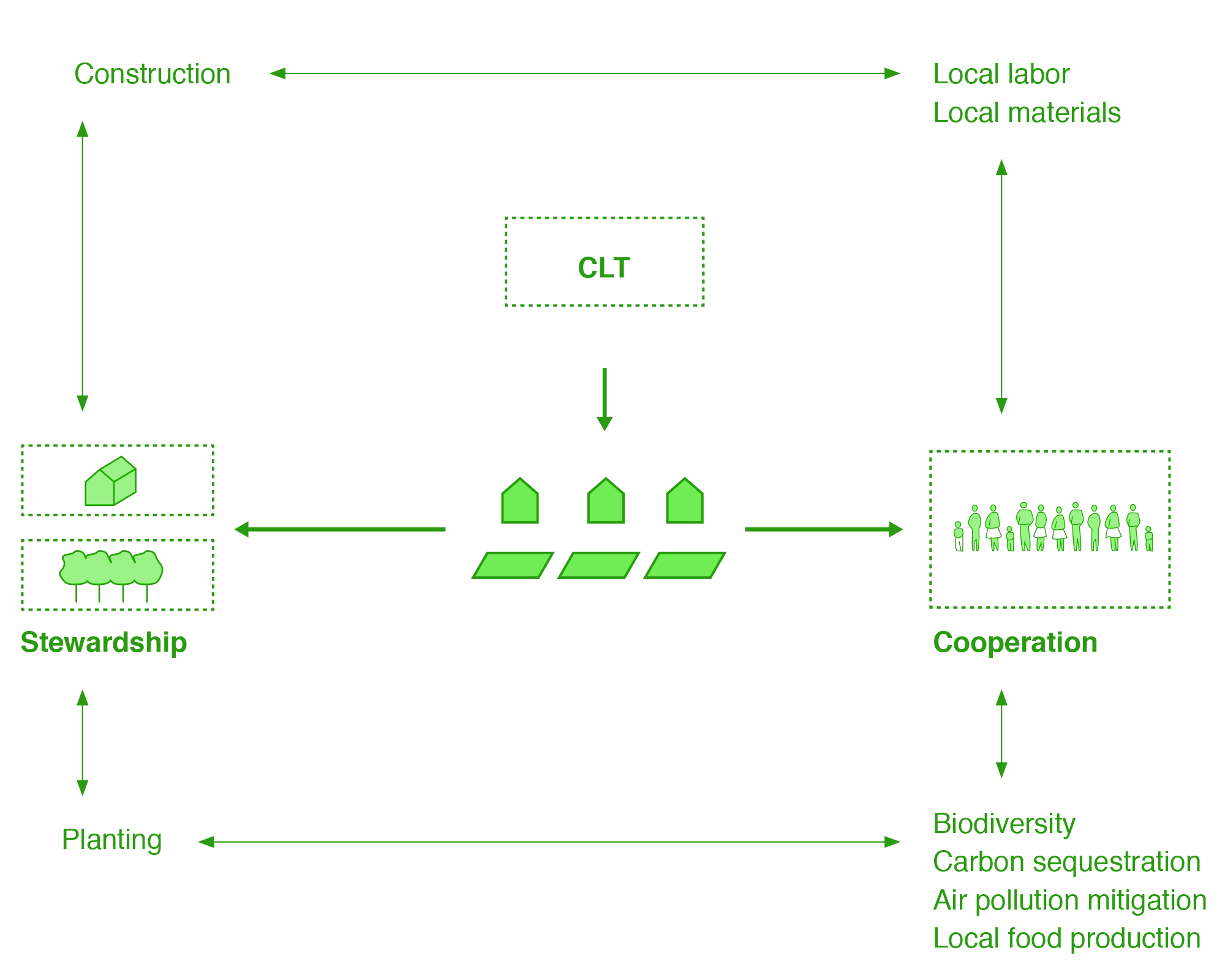Stewardship of the built environment and ecological restoration require labor. As a democratic institution that provides maintenance assistance to residents, a CLT is well-positioned to serve as a hub for community cooperation. Throughout history, human communities have relied on cooperation to meet their needs. By fostering self-sustaining community systems, a community can reduce their reliance on global supply chains, introduce new ecological stewardship initiatives such as carbon sequestration, decommodify education, and re-imagine who builds and maintains buildings in their community.
In the case of a CLT in San Ysidro, cooperative labor can become the key to enacting wider land-based strategies. The result is a two-pronged strategy that sees the CLT as a bridge between land and labor, or what the community might identify as the link between obras and obreros, or colaboraciones and colaboradores.

The precedents for this are many. Across cultures and throughout history, individuals, families, and collectives have worked together to meet their basic needs through self-sustaining community systems. Two of the following models are of particular relevance.
Communal labor can be defined as labor that is pulled together by a community for a common objective, following convocation. Individuals and households benefit from the shared resources and a collective effort.

Reciprocal labor is a form of mutual aid that relies on the rotation of labor, where people or groups take turns performing labor in order to lighten the burden otherwise placed on any one individual or family. The result is that individuals and households benefit from a circuit of reciprocity or mutual aid.

These models of collaboration can mobilize social labor in a way that reduces dependence on market forces, increases self-sufficiency in the community, allows for the transfer of knowledge between generations, and can support neighborhood-scale initiatives that would otherwise be too large for individuals to take on while also outside the scope of municipal jurisdiction. Ultimately, the vision is of a CLT that is reinvented to be far more than a juridical and financial mechanism for affordability, but as a democratic community institution that, through its support of cooperative initiatives, becomes a hub for generative and regenerative work in the neighborhood.

The work undertaken by these CLT-based cooperatives would follow a seasonal flow, not only because planting and construction must respond to seasonal weather conditions, but also because they are driven by self-initiated community mobilization, contingent upon resident availability, capacity, and interest. Conceived outside of an economic logic, construction can happen when needed and wanted, without a market imperative to force the extraction of materials or the production of unnecessary buildings and goods.
